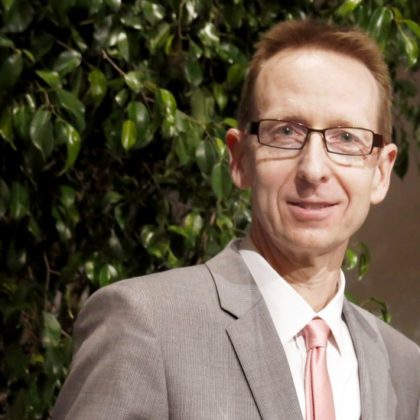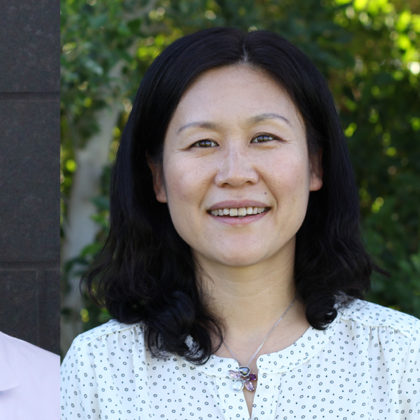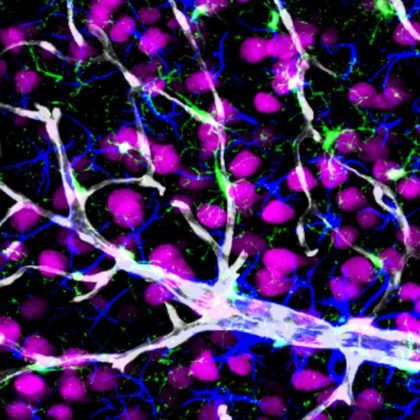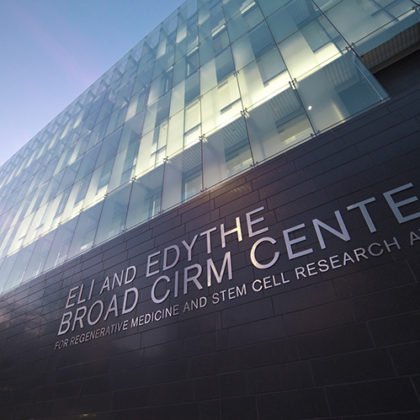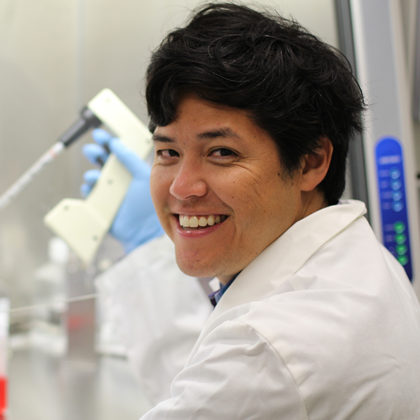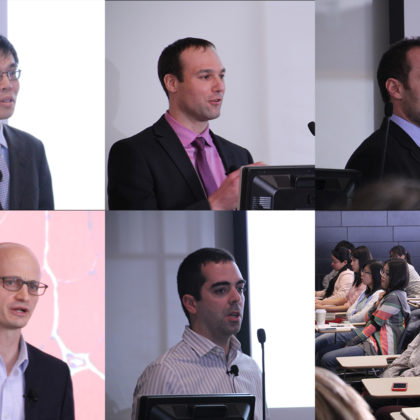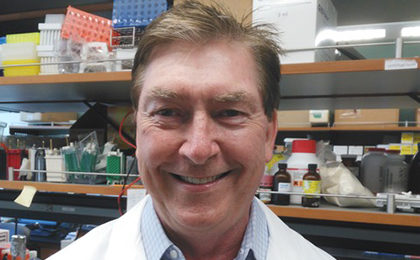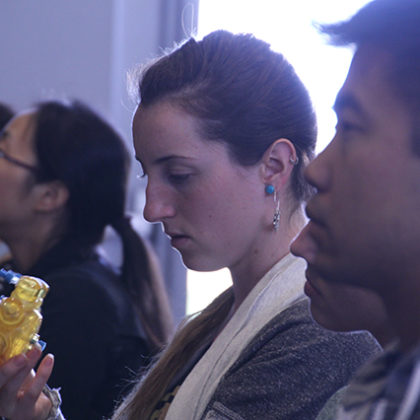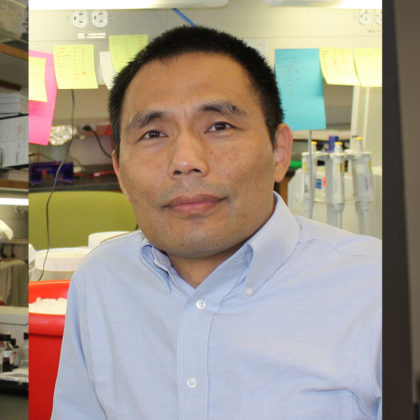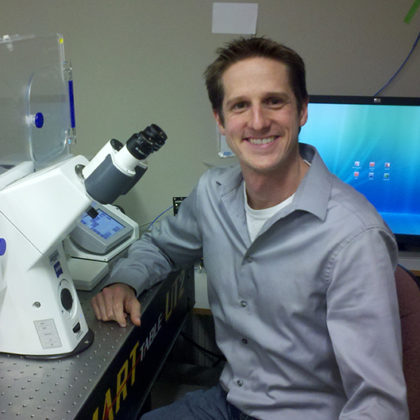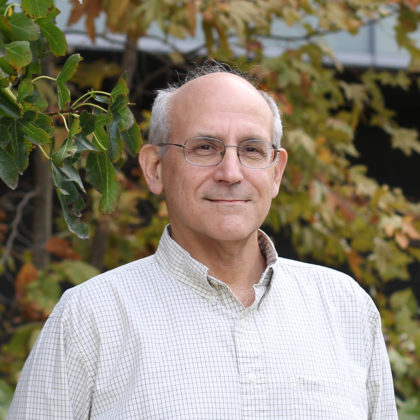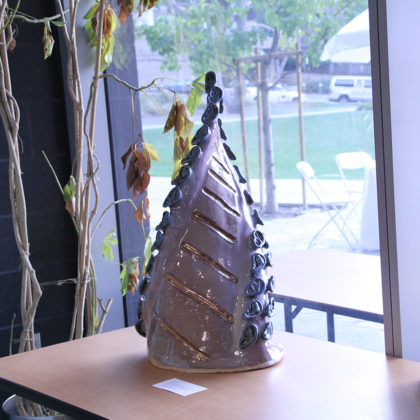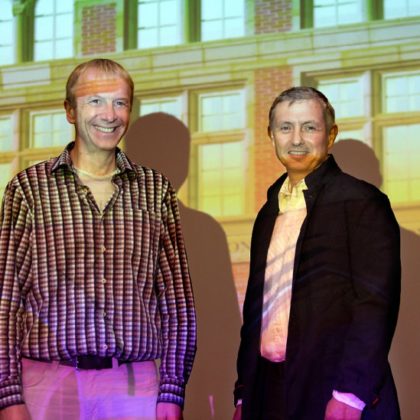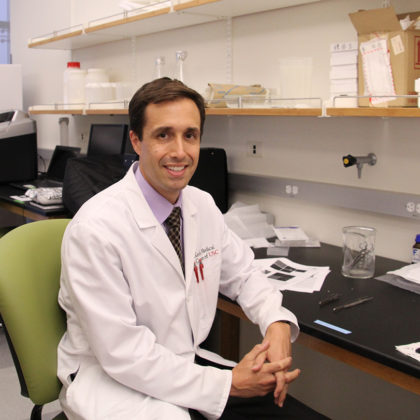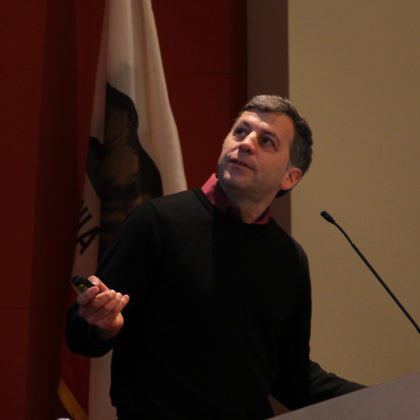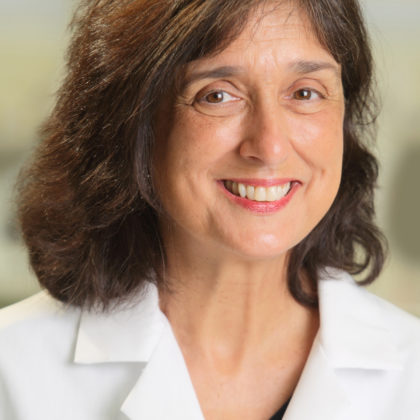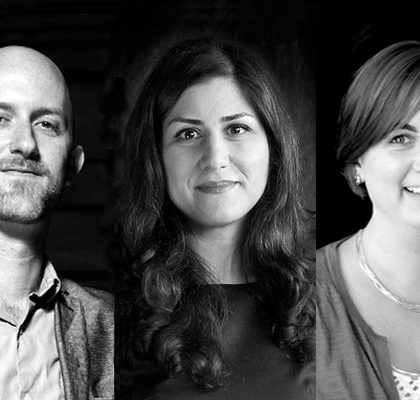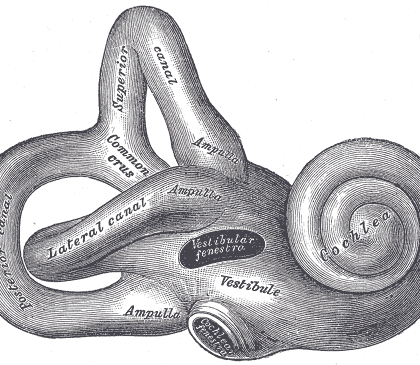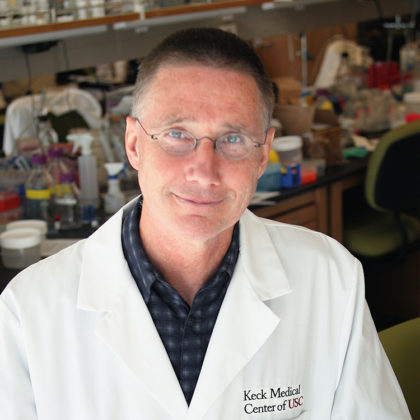Michael Quick to serve on state stem cell oversight panel
Sought: A neuroscientist with leadership experience to serve on the committee that reviews California’s funding of stem cell research. Found: Neurobiologist Michael Quick, provost and senior vice president for academic affairs at …
The Baxter Foundation awards grants to USC researchers Min Yu, Jon-Paul Pepper and Kevin S. King
It takes a very special doctor to push beyond existing patient treatments and engage in the quest for new ones. That’s why the Donald E. and Delia B. Baxter Foundation has selected …
Researchers clarify role of genetic risk factor in Alzheimer’s
Scientists at the Keck School of Medicine of USC have discovered that a protein known as PICALM regulates removal of toxic plaques from the brain, which could be a potential therapeutic target …
Take a tour of USC’s stem cell research center
Video by Alric Devotta Director Andy McMahon leads a tour of the Eli and Edythe Broad CIRM Center for Regenerative Medicine and Stem Cell Research at USC.
USC Stem Cell’s Justin Ichida, Sanofi and DRVision team up to fight ALS
USC Stem Cell researcher Justin Ichida has marshaled the expertise of pharmaceutical company Sanofi and start up DRVision Technologies along with $1.5 million in federal funding to find new drugs to fight …
USC mini-symposium showcases the next generation of top stem cell scientists
Obesity, narcolepsy, leukemia and muscle injuries have at least one thing in common: they are engaging the next generation of top stem cell scientists. Five of these scientists presented their research at …
Faculty Spotlight: David R. Hinton
David Hinton’s research is focused on developing novel therapies for age-related macular degeneration (AMD) – the leading cause of irreversible blindness in the elderly. He is approaching this goal in two main …
“Million-dollar ideas” seminar
At a special seminar on February 24, USC Stem Cell Principal Investigators discussed their “million-dollar ideas” for creating new tools and technologies to usher in the era of regenerative medicine. They shared …
Three USC researchers win $4.3 million in awards from California’s stem cell agency
Three scientists from Keck Medicine of USC have won grants exceeding $4.3 million from the California Institute for Regenerative Medicine (CIRM) for research that includes creating a temporary liver for patients, finding …
Michael Bonaguidi contributes brain power to stem cell research at USC
Video by Alric Devotta As a child, Michael Bonaguidi dreamed of shaping cities as an architect or engineer. Now, he dreams of shaping brains as the newest principal investigator to join USC’s …
Neil Segil uses stem cells to seek treatments for hearing loss
During most of his twenties, Neil Segil couldn’t really imagine pursuing a career in science and being a professor. Now he’s doing both — as a principal investigator with USC Stem Cell …
The helix of hearing
Doctor of Pharmacy candidate Loranna Grigoryan and undergraduate biological sciences major Jonathan Lee fashioned a series of human ears attached to a two-and-a-half foot structure evoking DNA’s double helix. The work of …
Justin Ichida screens potential therapies for Lou Gehrig’s disease
Justin Ichida started young on his path to becoming a scientist. He was in seventh grade when he discovered his passion for genetics through the pages of Michael Crichton’s Jurassic Park. “It’s …
USC recruits renowned leaders in molecular research
Raymond C. Stevens and Peter Kuhn have been named Provost Professor of Biological Sciences and Chemistry and Dean’s Professor of Biological Sciences, respectively. The announcements were made by Provost Elizabeth Garrett and …
Jon-Paul Pepper is a surgeon, scientist, student and award-winner
Video by Alric Devotta USC’s Jon-Paul Pepper is not the average award winner. He’s also not the average facial plastic surgeon, faculty researcher or master’s student — in part, because he’s currently all …
How a single genetic change causes retinal tumors in children
Retinoblastoma is a retinal tumor usually affecting children one to two years of age. Although rare, it is the most common malignant tumor of the eye in children. Left untreated, retinoblastoma can …
Roberta Diaz Brinton honored as Woman of the Year by Los Angeles Magazine
Los Angeles Magazine has named Roberta Diaz Brinton its Woman of the Year for her revelatory research to combat Alzheimer’s disease. Brinton, executive committee member of USC Stem Cell and holder of …
Megan McCain and colleagues make MIT list of 35 Innovators Under 35
The annual MIT Technology Review list of 35 Innovators Under 35 includes three USC Viterbi School of Engineering faculty members — including Megan McCain, principal investigator with USC Stem Cell. Professors McCain and …
NIH grant provides “ear training” for the next generation of neuroscientists
If you want to know why hearing and communication neuroscience matters, meet Richard Reed. A musician who lost his hearing for nearly a decade, Reed received a cochlear implant and successfully continued his career as a professional pianist and organist. He will be speaking and performing at 4 p.m. on August 22 on the University Park Campus to celebrate the start of the academic year and the renewal of the Hearing & Communication Neuroscience (HCN) training grant at USC.
Andy McMahon and USC Stem Cell: From discoveries to cures
Video by Little Pictures How do fingers become fingers and not toes? How does the brain generate the correct number of neurons? How do the kidneys branch into the complex and elegant …
